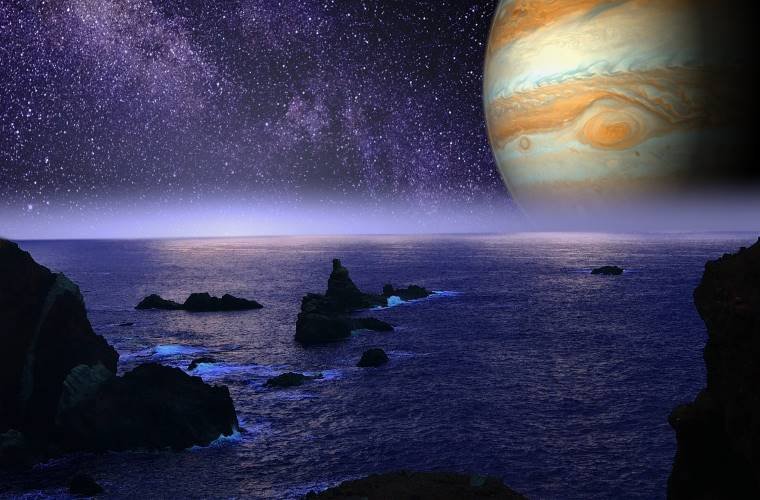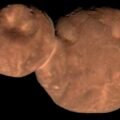Scientists from the University of Birmingham have announced their discovery of a pair of potentially habitable planets outside of our solar system.
The twin super-earths, which are typically defined as rocky planets anywhere from 1.2 to ten times as massive as our home planet, are approximately 100 light years from Earth and orbit the star LP 890-9, which is the second coolest star found to have planets behind those in the TRAPPIST-1 stellar system. Based on the planet’s masses, probable compositions, and the relatively low temperature of their host star, this discovery seemingly places these two discoveries right behind the planets orbiting TRAPPIST-1 as the most promising extra-solar locations to hunt for extraterrestrial life.


EXOPLANET DISCOVERIES CONTINUE TO MOUNT
Since the first discovery of a planet outside of Earth’s solar system in 1995, astronomers have upped the total of known exoplanets to well over 5,000 (and counting). Still, the majority of these objects have been massive gas giants like Jupiter or Saturn, making them less likely to support the type of life that thrives here on Earth. Of course, most astronomers point out that these planets are simply much larger and easier to spot with current telescopes, while smaller, rocky-earthlike planets are much harder to separate from their host stars.
Now, the team behind the latest discovery says they have not only found a perfect candidate for potential extraterrestrial life but have actually located two such planets within the same stellar system.
Potentially HABITABLE PLANETS SECOND ONLY TO TRAPPIST-1 IN SEARCH FOR E.T.
The first of the twin super-earths was spotted by the Transiting Exoplanet Survey Satellite (TESS), a tool developed specifically to hunt for planets outside of our solar system.
“TESS searches for exoplanets using the transit method, by monitoring the brightness of thousands of stars simultaneously,” explained Laetitia Delrez, a postdoctoral researcher at the University of Liège and the study’s lead author, “looking for slight dimmings that might be caused by planets passing in front of their stars.”
“However,” Delrez added, “a follow-up with ground-based telescopes is often necessary to confirm the planetary nature of the detected candidates and to refine the measurements of their sizes and orbital properties.”
Sure enough, that initial discovery was confirmed and characterized (mass, size, etc.) by the ground-based SPECULOOS telescopes (Search for habitable Planets EClipsing ULtra-cOOl Stars). SPECULOOS was particularly helpful since stars that are this cool in temperature emit most of their radiation energy in the near-infrared (IR) spectrum. TESS isn’t very sensitive in near IR, with the press release announcing the find noting that when it comes to near IR, “TESS has a rather limited sensitivity.”
Following the SPECULOOS confirmation, the team went back to TESS to see if another planet might be hiding in the same system. And voila, they spotted a second rocky super-earth also within the star’s habitable zone. Like before, this data was confirmed by SPECULOSS.
“The observations of LP 890-9 gathered by SPECULOOS proved fruitful,” the release explains, “as they not only confirmed the first planet, but they were critical for the detection of a second, previously unknown planet.”
Dubbed LP 890-9b and LP 890-9c, respectively, both planets are about 40% larger than Earth. Like TRAPPIST-1, their host star LP 890-9 is not a main sequence star like our sun but is instead a smaller, cooler red dwarf. As a result, its habitable zone is much closer.
“The habitable zone is a concept under which a planet with similar geological and atmospheric conditions as Earth would have a surface temperature allowing water to remain liquid for billions of years,” clarified Amaury Triaud, a professor of Exoplanetology at the University Birmingham and the leader of the SPECULOOS working group.
In this case, that means the two planets have orbital periods of 2.7 days and 8.5 days, respectively. For reference, Earth’s orbital period is essentially 365.25 days.
“This orbital period (of planet 890-9b), later confirmed with the MuSCAT3 instrument in Hawaii, places the planet in the so-called “habitable zone” around its star,” the release explains. Further measurements confirmed that 890-9c is also within the star’s habitable zone.
DETERMINING HOW FREQUENTLY BIOLOGY HAS EMERGED IN THE COSMOS
Given the magnitude of finding a planet outside of our solar system that has the potential to support life, the researchers behind the stunning find say their work is just starting.
“This (discovery) gives us a license to observe more and find out whether the planet has an atmosphere,” said Triaud, who was also part of the group that discovered the planets around TRAPPIST-1 “and, if so, to study its content and assess its habitability.”
Like much of modern astronomy, the team notes that the newly launched James Webb Space Telescope (JWST) is perfectly equipped for these types of follow-up measurements. This includes studying both planets’ atmospheres for the chemical signs of life, often referred to as biosignatures.
Ultimately, this is as significant a find in the hunt for extraterrestrial life as nearly all exoplanet discoveries before it. And depending on the results from follow-up observations, it may herald significant advancement in the fields of exobiology and astrobiology.
“It is important to detect as many temperate terrestrial worlds as possible to study the diversity of exoplanet climates,” said professor Triaud, “and eventually to be in a position to measure how frequently biology has emerged in the Cosmos.”
Follow and Connect with Author Christopher Plain on Twitter @plain_fiction

